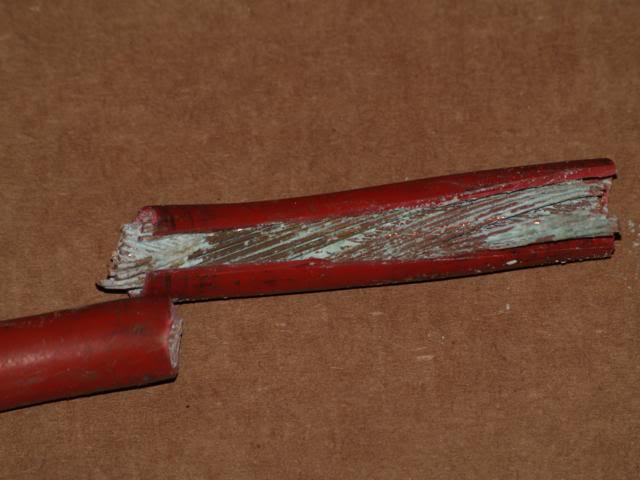This is from the November Rock Auto newsletter, good information about this subject.
"Voltage Drop Testing
[
https://www]
Check the condition of the wiring and ground connections before rushing to replace a starter motor. How do you do that? Your trusty multi-meter can help.
Resistance (ohms) is NOT the multi-meter setting to use. The reading will very likely be zero ohms when the multi-meter's probes are placed at the ends of a cable or on each side of a grounding point. Unfortunately, a zero resistance reading does not mean a cable or ground connection is in good condition. It just means that there is at least one tiny strand of functional wire left in that nasty old cable or one nanometer of relatively clean metal in that corroded grounding point.
Instead, set the multi-meter to read DC volts and measure voltage drop while the circuit is under load (the starter is switched on). If the circuit is not switched on then there will be no current flowing and zero voltage change. Use a*Remote Starter*or have an assistant turn the ignition key to switch on the starter motor and consecutively put multi-meter probes at both ends of cables and across ground connections while watching for significant voltage. It varies, but a voltage greater than 0.5 volts is considered to be significant on most vehicles.
Some example tests:
Put the multi-meter probes at both ends of the large cable running from the battery to the starter motor. Switch on the starter motor and a voltage reading greater than 0.5 volts might indicate the cable is frayed internally or its connection points are corroded.Put the multi-meter probes on the battery positive terminal and the thinner wire (S terminal) on the starter solenoid. If the voltage reading stays greater than 0.5 volts when the starter is switched on, then there could be a problem with the ignition switch, a relay, wiring or some other component in the ignition switch circuit.Put the multi-meter probes on the battery negative terminal and the metal body of the starter. A voltage drop greater than 0.5 volts could indicate corrosion or a contaminant like engine oil is preventing the starter body from making a good ground connection with the engine. Perhaps the battery terminal connection or ground wire between the battery and the engine block is corroded or loose.
Voltage drop testing can also be similarly used to test alternator, radio and other circuits. Frayed wires, corroded connections and failing relays add resistance to the circuit, thereby creating an unusually high voltage across the failing component as electrical current flows.
Tom Taylor,
RockAuto.com"

